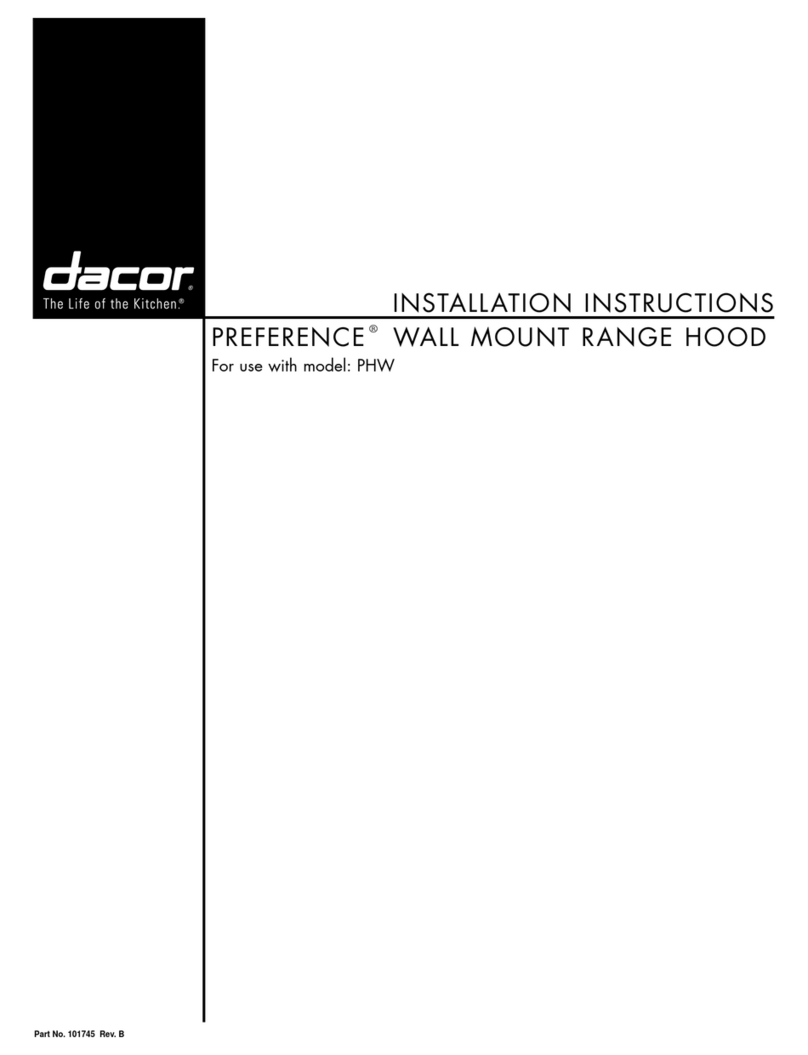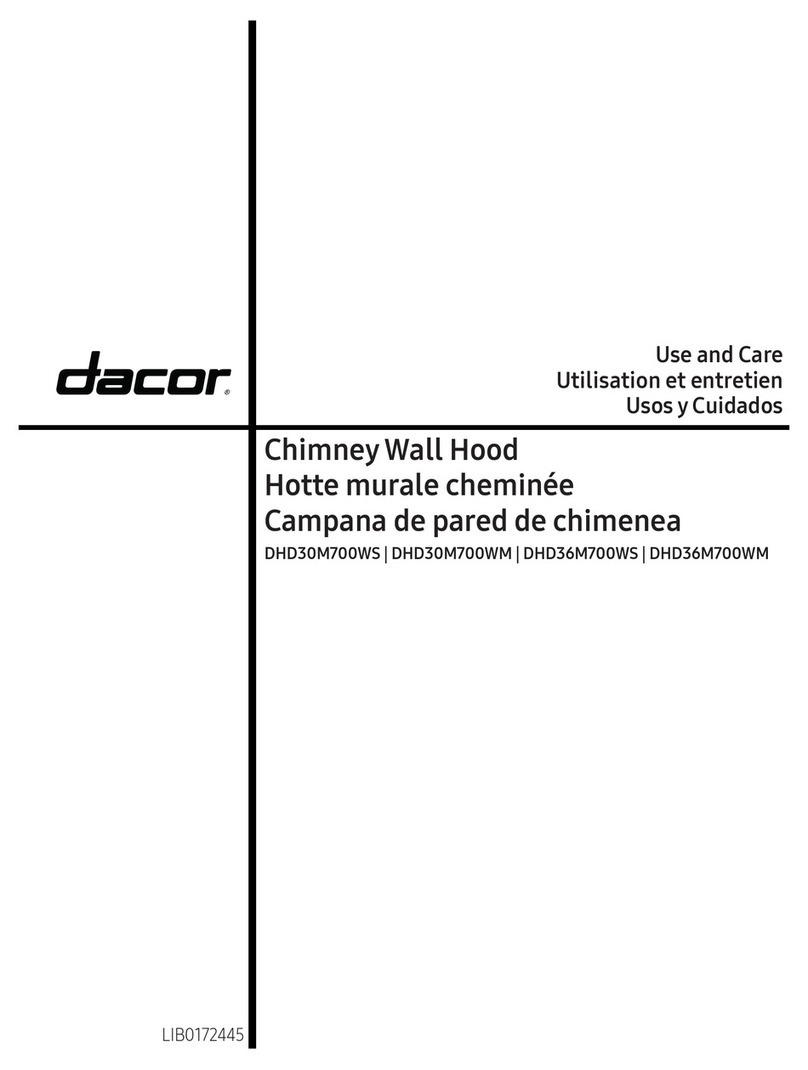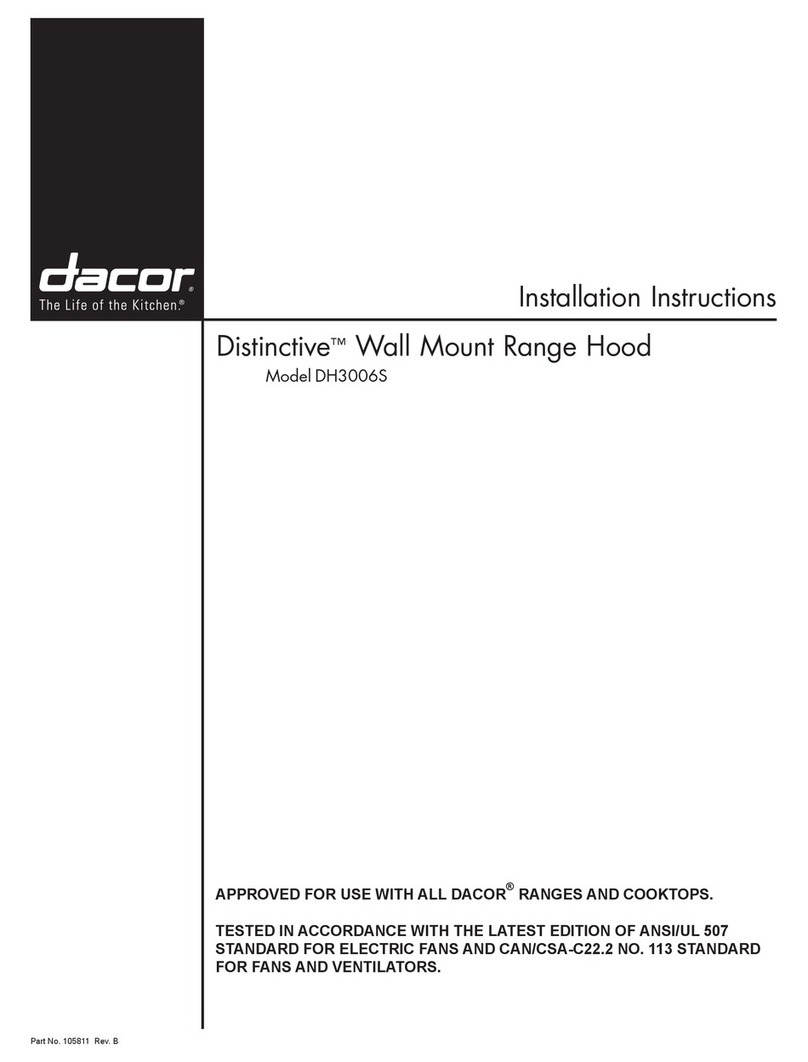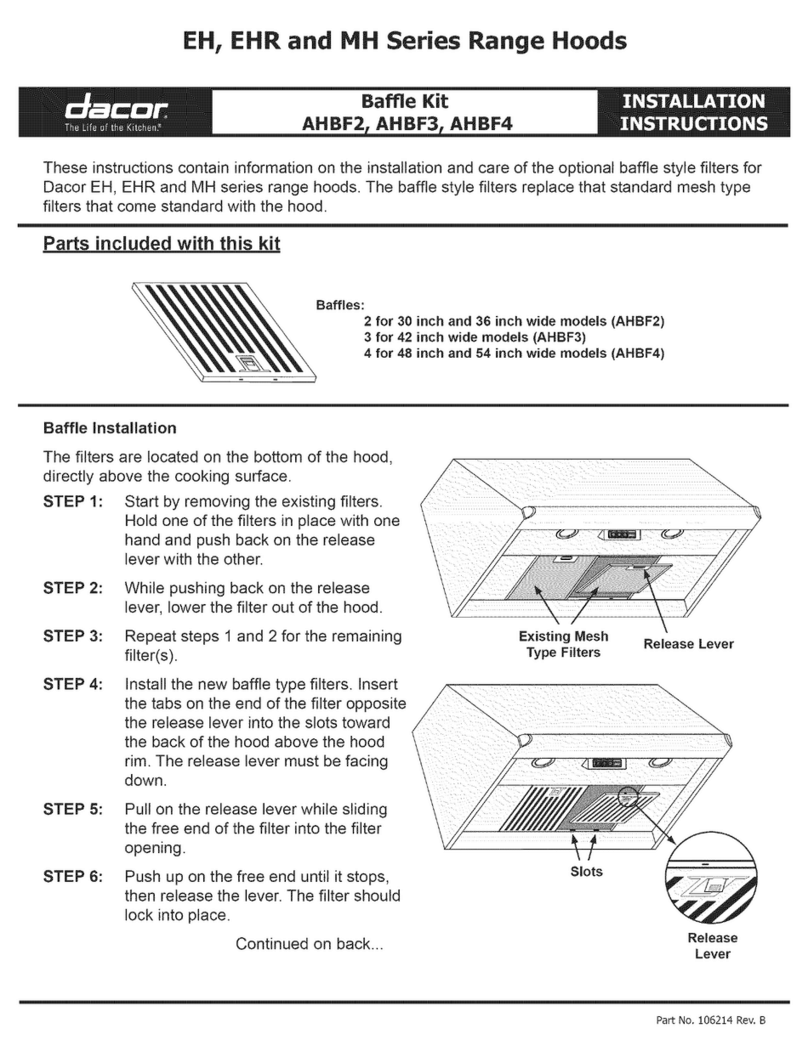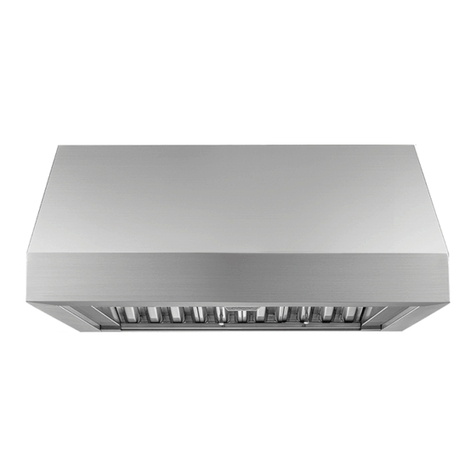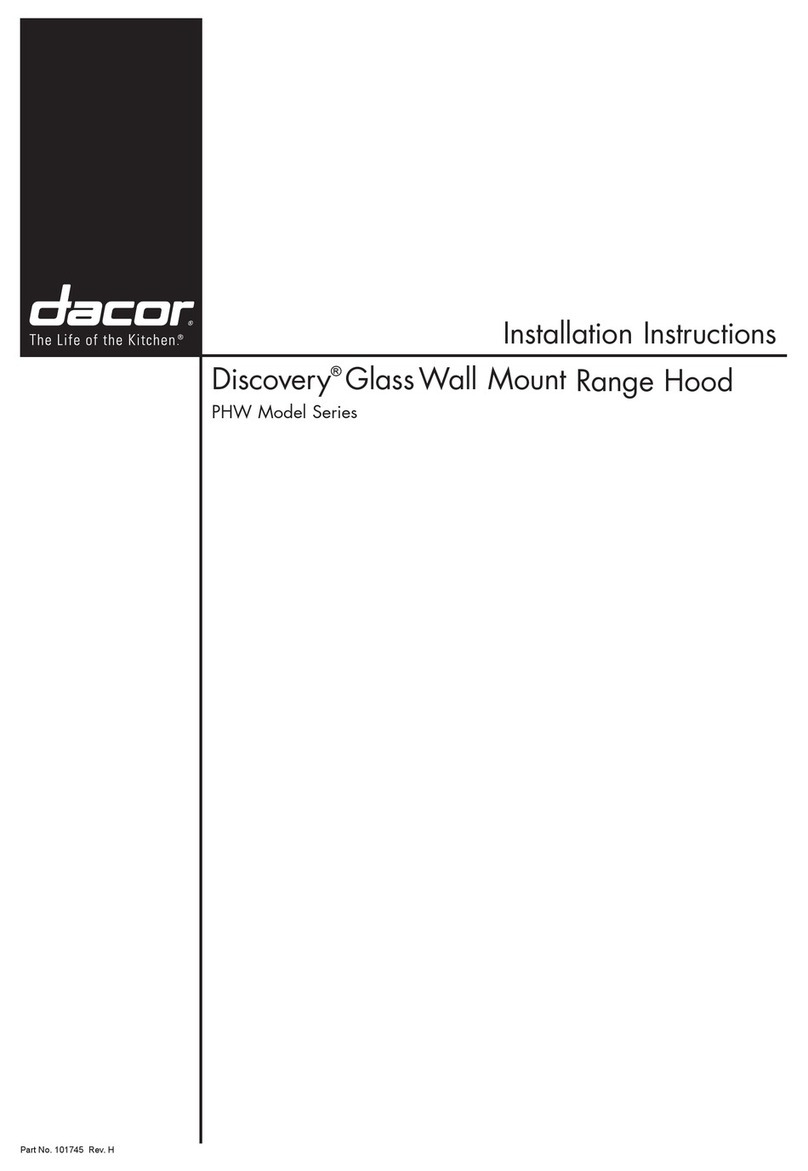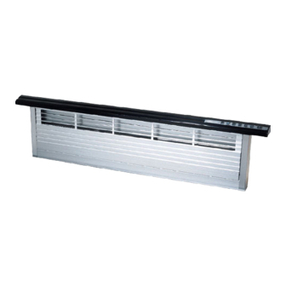Planning and Installing the Duct
Work
WARNING
To prevent combustion by-products, smoke or odors•
from entering the home and to improve efficiency,
tape all duct joints securely.
Use only duct work deemed acceptable by state,•
municipal and local codes.
DO NOT• install an additional in-line or external
blower to increase the length of the duct run. Even
small differences between blower air flow rates can
greatly reduce the air draw of the hood.
CAUTION
To reduce the risk of fire and to properly exhaust air, be
sure to duct air outside the house or building. Do not
vent exhaust air into spaces within walls or ceilings or
into attics, crawl spaces or garages.
All duct work materials (including screws and duct■
tape) must be purchased separately by the customer.
When planning new duct work, always look for the■
shortest, most direct route to the outside. Venting can
be done through the roof or directly through the back
wall to the outside as shown below.
The hood exhaust connects to an 8-inch round duct.■
You can increase the duct size over the duct run if
desired. To prevent a back draft, never decrease the
duct size over the run. If existing duct work is smaller
than 8 inches in diameter, remove it and replace it
with 8-inch duct work.
Do not rely on tape alone to seal duct joints. Fasten■
all connections with sheet metal screws and tape all
joints with certified silver tape or duct tape. Use sheet
metal screws as required to support the duct weight.
To prevent back-drafts, a damper at the duct outlet■
may also be required.
Make sure duct work does not interfere with floor■
joists or wall studs.
Installation Specifications
Calculating the Maximum Duct Run Length
The maximum straight duct length for the hood is 50 feet.
To determine the actual maximum duct run, subtract the
equivalent length of each elbow, transition and cap from
50 feet.
EQUIVALENT LENGTHS
Piece Subtract Piece Subtract
8” 90° elbow 7 feet 10” 90° elbow 5 feet
8” 45° elbow 3 feet 10” 45° elbow 2 feet
3¼” X 10”
to round 90°
transition
25 feet
3¼” X 10” to
8”/10” round
transition
4 feet
Roof cap * Wall cap with
damper *
* The equivalent lengths of roof and wall caps vary with
model and configuration. For equivalent length, contact
the manufacturer or a qualified HVAC specialist.
Duct Work Design Tips
Wherever possible, reduce the number of transitions and
turns to as few sharp angles as possible. Two staggered
45° angles are better than one 90°.
Keep turns as far away from the hood exhaust as pos-
sible, and as much space between bends as possible.
For best performance, use round duct instead of rectan-
gular, especially when elbows are required.
If multiple elbows are used, try to keep a minimum of 24
inches straight duct between them.
Avoid “S” or “back to back” use of adjacent elbows.
In regions where the weather gets extremely cold, use
thermal breaks, such as a short section of non-metallic
duct, to avoid indoor heat loss. Locate the break as close
as possible to the outside pass through point.
Do not use flexible metal duct.
DO NOT use duct work that is smaller in cross-sectional
area than the recommended types above.
